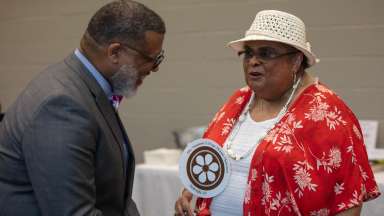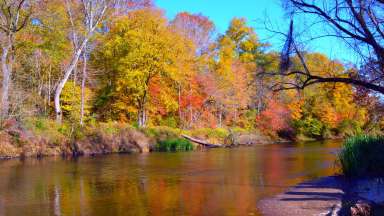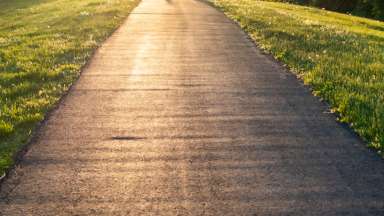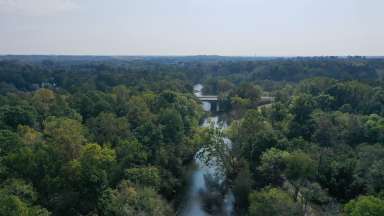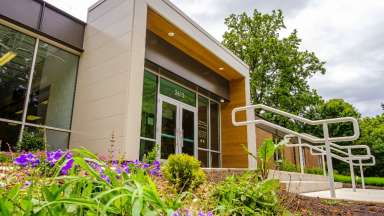Jump To:
Urban Forestry, within the Parks and Natural Resources Division of Raleigh Parks, planted 1,000 street trees during the last three years.
The street tree planting program supports initiatives outlined in the City of Raleigh’s Strategic Plan, including improving the urban forest and reducing environmental inequities across the City of Raleigh as found in Growth and Natural Resources 1.1, 3.1, and 3.4.
Purpose
In early Summer 2021, Urban Forestry staff asked two questions: 1) Are street trees in Raleigh equally distributed? and 2) Are street trees in Raleigh equitably distributed? These questions were answered with these steps:
- Street tree density was mapped for the City of Raleigh by the Raleigh Parks GIS team. This map told us street trees are not equally distributed throughout the city.
- Social data was added to the map which identified street trees were lacking in a cluster of neighborhoods southeast of downtown Raleigh. This map told us street trees are not equitably distributed in the city.
- The map was verified with an in-person street tree inventory that confirmed the location of existing street trees and empty planting spaces in the right-of-way.
Where there are gaps in the right-of-way, there are opportunities to plant street trees. Growing an equitable urban forest in the neighborhoods southeast of downtown Raleigh is known as the Street Tree Equity Project.
Planting Update
The first planting took place in January 2023, where 350 street trees were planted in front of churches, schools, and parks. The second planting began in January 2024 with 350 street trees planted by mid-March. The third planting began in January 2025, where street trees were planted in front of homes, businesses, parks, and other public spaces, which filled in the remaining gaps.
Planting locations can be seen on the map below.
Community Engagement Updates
In the summer of 2023, Urban Forestry and Community Engagement staff attended summer events like Earth Day, Arbor Day, and Mud Day to connect with residents about the project. In August 2023, residents adjacent to planting locations received a paid-postage mailer to select the tree species or identify they would not prefer a tree, in the right-of-way.
The community engagement efforts for the third year doubled as residents adjacent to nearby planting locations received two mailers to make their selection by July 15. Yard signs, placed in the right-of-way, announcing the plantings were placed throughout the neighborhoods. Closer to the planting date, door hangers were distributed to serve as a final reminder before trees were installed. Lastly, in-person events like Earth Day and Mud Day provided additional opportunities to connect with residents.
City of Raleigh Street Tree Equity Project
Frequently Asked Questions
Why are street trees important?
Increasing trees within a neighborhood provides environmental, social, and economic benefits, such as:
• Cleaner air as trees filter out dust and pollutants
• Reduced flash floods during rainstorms
• Absorbing carbon dioxide while producing oxygen
• Providing shade and cooler air temperatures during hot days
• Encourage neighbors to play and gather outdoors
• Connecting people with nature
• Reduce air conditioning bills during the hot summer months
How did you determine where to plant new street trees?
As part of the Strategic Plan and effort toward environmental equity and justice, the Urban Forestry division reviewed and analyzed the current inventory of street trees and determined the priority areas for new plantings.
The Urban Forestry Division completed a walking survey of existing street trees, reviewed available Census Data, and reviewed an Urban Heat Island study. The walking survey showed, on average, there was about 1 street tree every 1,000 feet in the priority area, whereas other, newer parts of the City had street trees every 40 feet. While existing infrastructure like curbs, driveways, or retaining walls might have made it difficult to plant a tree every 40 feet, there was ample space to increase the overall number of street trees in the area.
Who waters and maintains the street trees?
Urban Forestry staff and the landscaping company hired to install the trees will be responsible for planting, watering, and monitoring the trees for health and vigor.
Can the tree roots from street trees grow into my pipes?
Tree roots can only grow into pipes that are already damaged and leaking water; however, the proposed tree locations are a minimum of 5 feet away to avoid any conflicts with larger roots that will develop later in the tree’s life.
Who can I talk to if there are existing or future problems like limbs blocking the street or sidewalk or if the tree looks like it is dying?
You may complete a Tree Service Request or call 919-996-4115 to report any issues. An Urban Forestry certified arborist will follow up with the request, complete an inspection and organize a plan to correct any problems, like removing and replacing the tree or pruning limbs out of the street.
The City also has Ask Raleigh for reporting other issues like graffiti, potholes, drainage, signals & signs, parks & trails, water & sewer or garbage.

